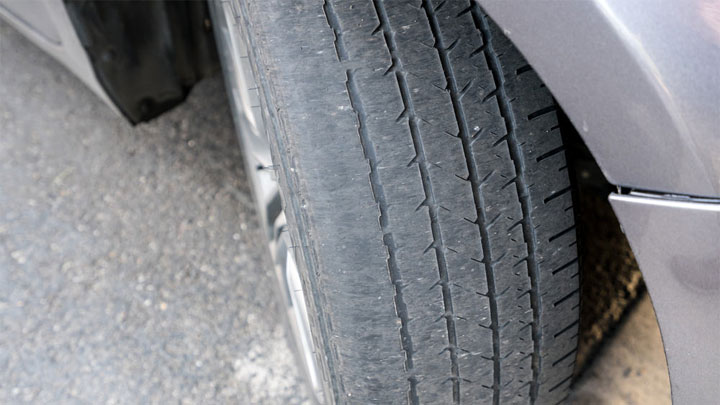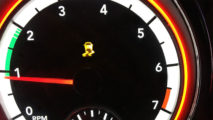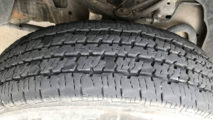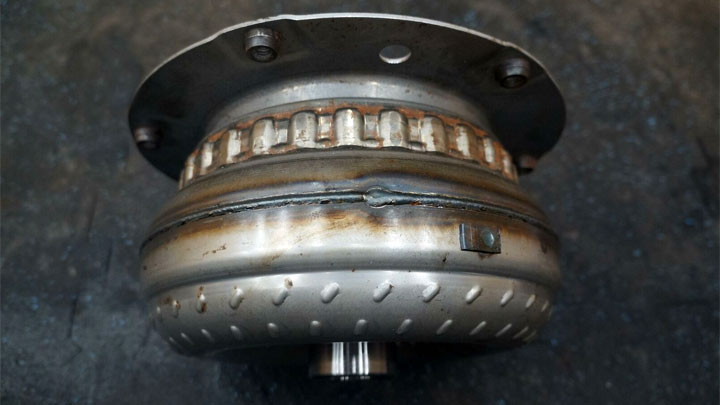Last Updated on April 18, 2022
As most motorists are well aware, our vehicles’ tires play a pivotal role in maintaining traction with the roads along which we travel. Our tires transfer torque to any given surface, while also preventing untimely slides or skids that can prove extremely hazardous.
Unfortunately, tires do wear out with time, leaving us to purchase suitable replacements of similar construction. However, under certain circumstances, a vehicle’s tires can wear irregularly, thereby expediting the need for eventual replacement.
One of the most common forms of uneven tire wear is that which appears along the outer edge of a tire’s tread. Outside-edge tire wear (like inside-edge tire wear) is not only problematic but also tends to be quite aggravating and costly as well. After all, nobody wants to condemn a set of tires any quicker than absolutely necessary.
Read on to learn more about the various causes of outside tire wear, as well as how to address such issues, should they arise in the future.
What Causes Outside Tire Wear?
Outside tire wear can be caused by a number of variables, all of which require special attention. Understanding each potential source of outside tire wear can prove valuable when attempting to remedy the situation at hand.
The following are several of the most common causes of outside tire wear.
#1 – Under-Inflation Wear
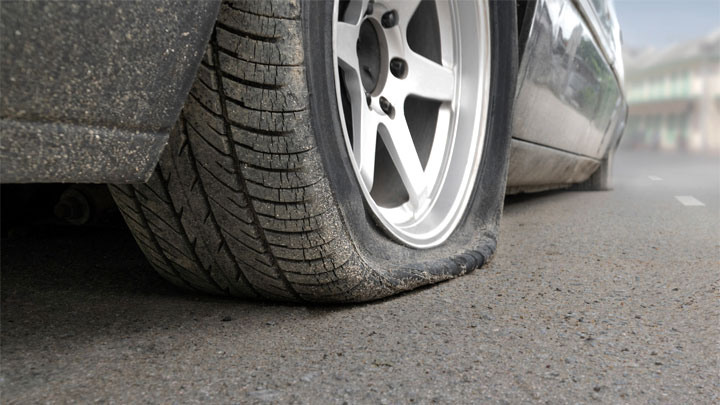
An under-inflated tire will begin to exhibit accelerated wear along the outside edges of its tread, in relatively short order. This is due to the fact that the outer “shoulder” of a tire’s tread is under additional stress when operated in an under-inflated state.
Likewise, the inside edge of an under-inflated tire will also typically show signs of accelerated wear. This condition can be corrected by properly inflating your tires to the pressure specified by your vehicle’s manufacturer.
#2 – Exceedingly Positive Front Camber

A camber measurement describes the inward/outward tilt of a vehicle’s tires, as compared to a vertical axis. Excessive camber of any type can lead to irregular tire wear. This is most often observed as premature inner/outer edge tire wear.
In the case of noticeable outer edge tire wear, exceedingly positive camber is often to blame. In the bulk of cases, this condition can be corrected with a simple alignment. However, one might also wish to rotate their tires as well, to even out any irregular wear over the course of time.
#3 – Incorrect Toe Adjustment

A toe measurement stipulates the inward/outward angle of a vehicle’s front or rear tires, as observed on a horizontal axis. Improperly adjusted toe can lead to numerous issues, including irregular or accelerated tire wear. In many cases, this wear is most often observed along a tire’s edge.
To correct this condition, a vehicle will need to be aligned by qualified personnel, to prevent further wear. Additionally, it is advised to rotate the affected vehicle’s tires, assuming that they are not worn to the point of replacement.
One might also wish to inspect their vehicle’s front end for signs of wear, if an incorrect toe is isolated as the source of irregular tire wear.
#4 – Suspension Component Wear
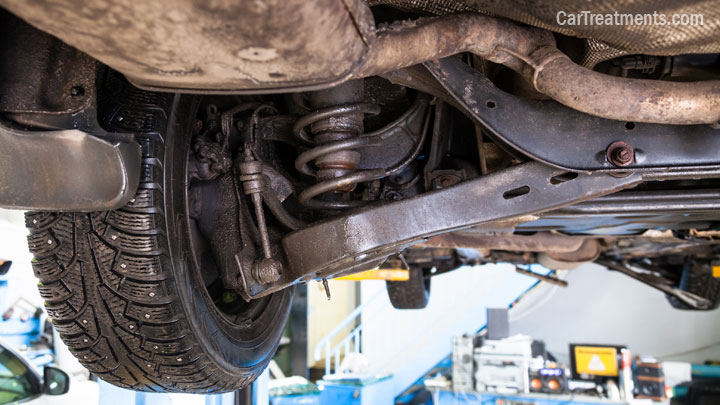
In certain instances, worn suspension components can also cause a vehicle’s tires to wear excessively along the edges of their tread.
As a general rule, suspension-related wear is typically observed as cupping or scalloping within a tire’s tread pattern. This type of wear often makes a tire appear as if its tread is peeling off in a set pattern.
Though wear of this type affects most tires in their entirety, it often first becomes noticeable along the outer edge of a tire’s tread pattern. Fixing wear of this type typically necessitates the replacement of any worn, or otherwise compromised suspension components, such as a vehicle’s shocks and struts.
#5 – Component Damage
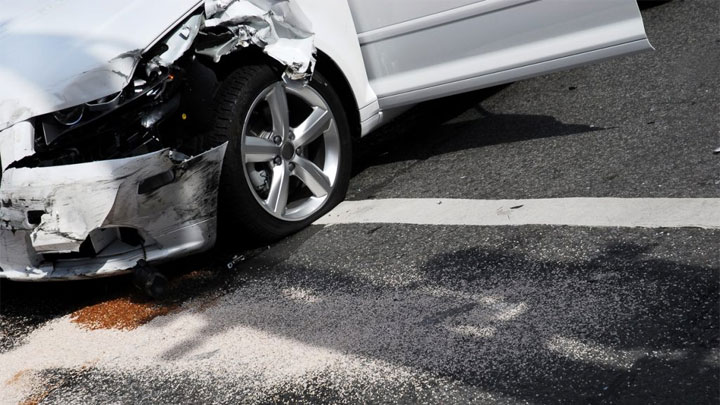
Irregular tire wear of any type can be caused by damage to one or more of a vehicle’s critical steering or suspension components. This damage is most often caused by a collision, no matter the severity.
Even striking a curb at speed can cause substantial damage to a vehicle’s steering and suspension components, under certain circumstances.
Damage to a vehicle’s steering and suspension components can also result from towing excessive weight on a trailer, regular off-road driving, or prior improper installation of front-end parts.
No matter the cause, any compromised steering and/or suspension components must be replaced before tire wear will return to normal. Additionally, when replacing components of this type, a front-end alignment might also be necessitated.
Is It Safe to Drive With Abnormal Outer Edge Tire Wear?
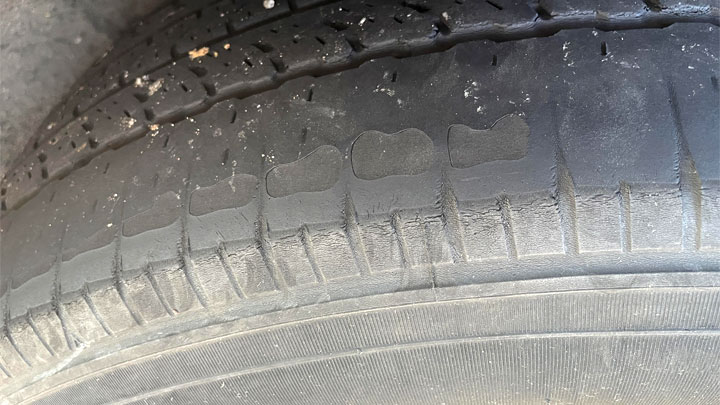
Whether or not it is safe to drive on one or more tires displaying outer edge wear is largely dependent upon the severity of the wear itself.
If such irregular wear has just started, and is rather minor in appearance, one can often salvage such a tire by rotating it to another wheel end location. Of course, the root cause of this abnormal wear must also be corrected.
On the other hand, any tire that has been structured compromised by abnormal wear should be discarded without hesitation. This includes those that have begun exhibiting significant outer edge wear. If secondary rubber (structural non-tread rubber), or belting material has become visible, the use of this tire should cease immediately.
Related: 16 Best Tire Brands (and What We Recommend)
Tires exhibiting irregular wear can be at risk for a blow-out, which in turn, can cause a wreck. This is especially true of any tire with cord or belting material visibly showing.
Driving on tires in this state can be extremely hazardous, and can significantly increase one’s chance of being injured in a wreck. Therefore, periodic tire inspection is of the highest importance, and can even save lives in certain cases.
If in doubt, it is always better to discontinue the use of a particular tire, rather than risking your safety, or the safety of your family. Though tires can be relatively expensive, they are worth every penny when one’s life is on the line.

